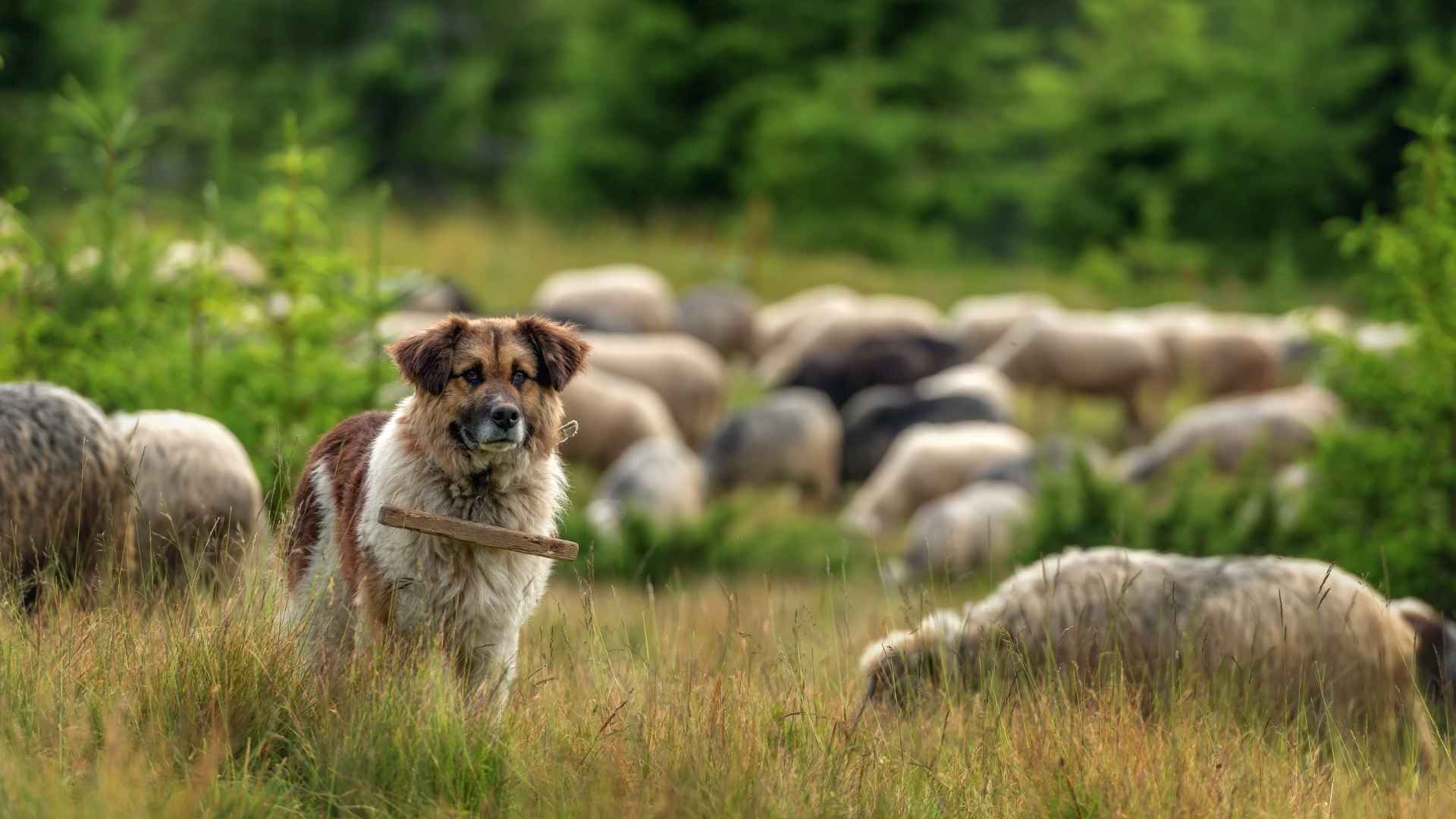Imagine a dog so intelligent and intuitive that it doesn’t need a single word to guide an entire herd of cattle. No whistles, no shouts—just eye contact, body language, and pure instinct. Sounds like something out of a cowboy legend, right? But for certain breeds, it’s just another day on the job.
These remarkable dogs are born herders, hardwired with the skills to control and move livestock with zero verbal direction. It’s like they have a mental map of every cow in the field and a sixth sense for exactly where they need to be.
You’ll often see them zigzagging effortlessly, flanking the herd with confidence, and anticipating moves before the cows even make them. We’ll introduce you to the breeds that don’t need instructions to get the job done. Whether you’re a rancher looking for the perfect herding partner or simply fascinated by canine intelligence, you’ll be amazed by these natural-born cowhands.
These dogs prove that you don’t need to speak the same language to work as a team—you just need trust, talent, and a tail that never stops wagging.
Dog Breeds That Herd Cattle Without Commands
1. Australian Cattle Dog
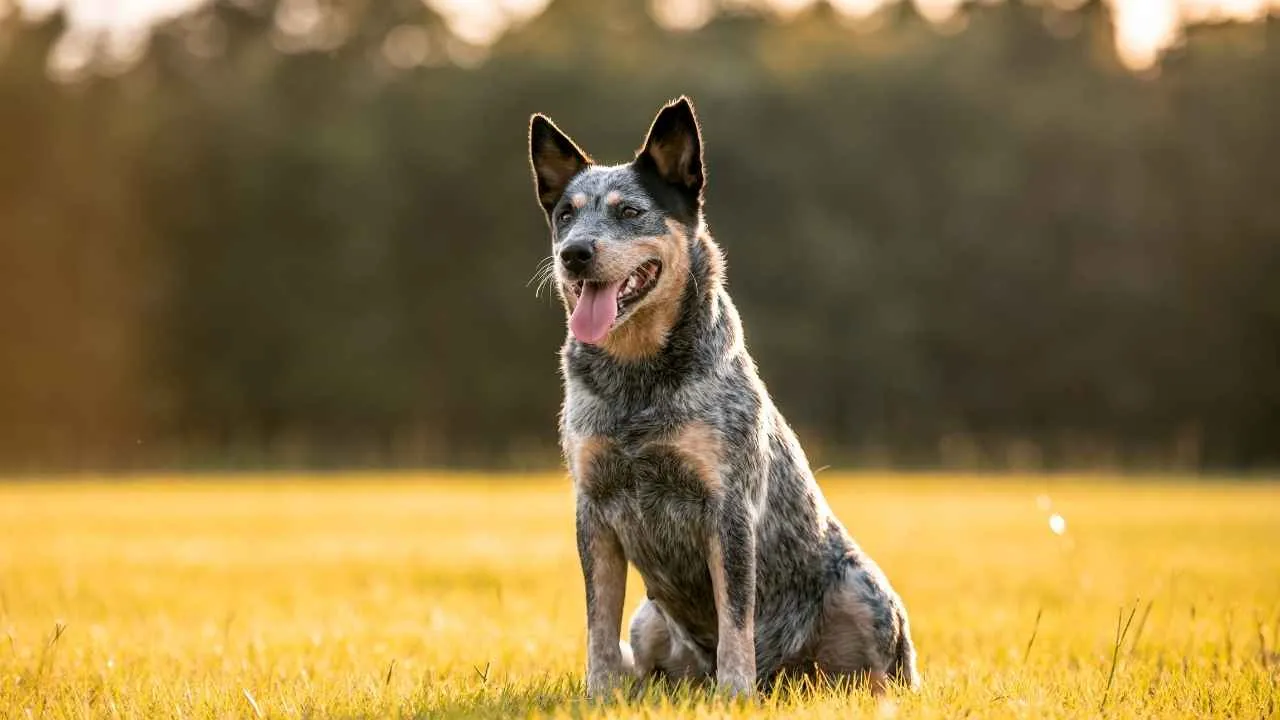
Herding style: Driving
Best for herding: Cattle
The Australian Cattle Dog—also known as the Blue Heeler, Red Heeler, or Queensland Heeler—is a compact yet muscular breed with a rugged background. Closely related to Australia’s wild Dingo, these tough herders are incredibly intelligent and often clever enough to outwit their owners, according to the American Kennel Club (AKC).
These dogs are like the Clint Eastwood of the canine world — silent, focused, and intimidatingly efficient. They don’t bark orders; they give looks. You know, the kind that says, “Don’t even think about it, Bessie.”
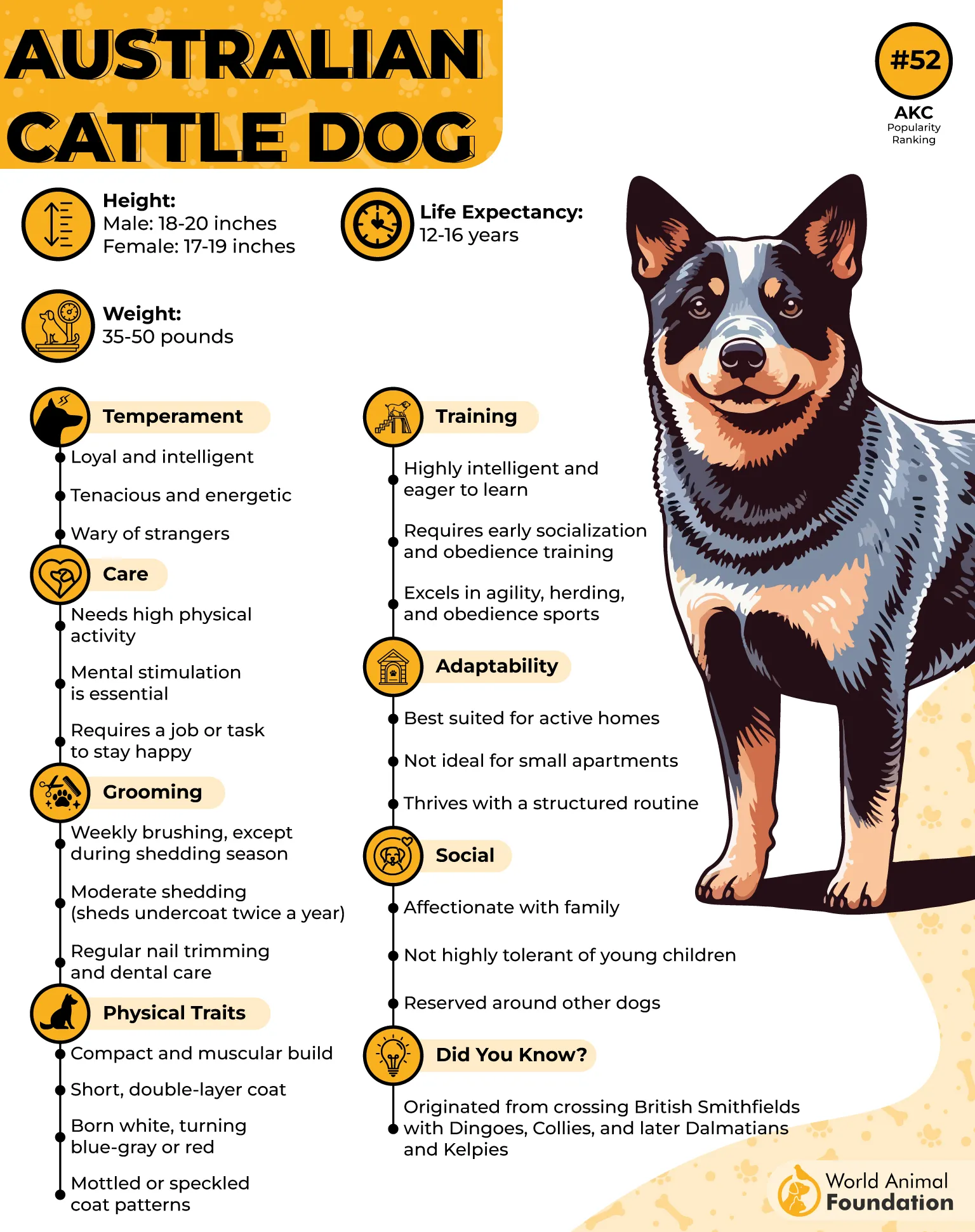
Bred in the wild landscapes of Australia, these dogs weren’t just made to herd cattle — they evolved to. Farmers needed a dog that wouldn’t collapse under the outback sun, wouldn’t flinch at a stubborn steer, and wouldn’t wait around for a “go left” or “stay.” With intelligence levels that could probably outwit your average teenager, these pups thrive when they’re given a mission.
But here’s the twist — if you don’t give them a job, they’ll assign themselves one. Guarding the house? Sure. Sorting the laundry? Why not. Herding every single garden gnome into one corner? Done by breakfast.
2. Bearded Collie
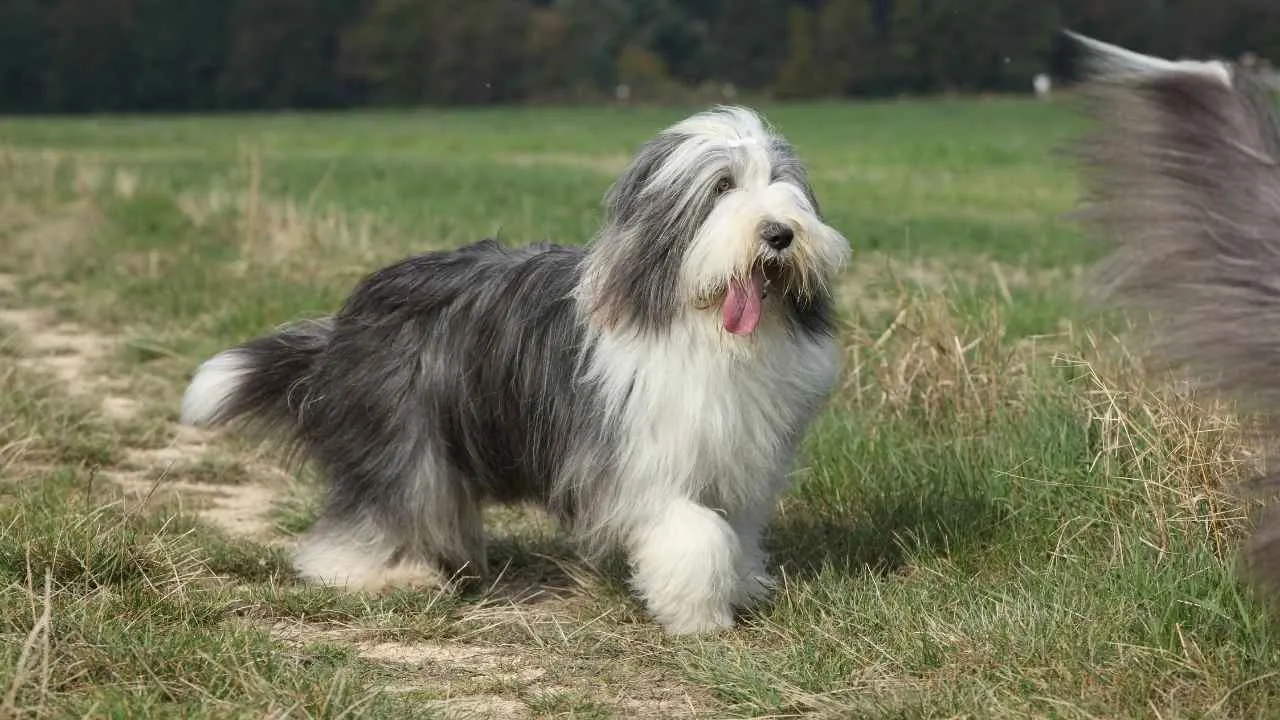
Herding style: Gathering and driving
Best for herding: Sheep, cattle
If you thought “useful” was just a polite way to say “good at chores,” meet the Bearded Collie — a shaggy superstar whose very name means “useful” in Gaelic. And boy, do these dogs live up to their legacy!
Originating from the misty hills of the U.K., Beardies are among the oldest herding breeds around. They’re like the wise elders of the canine world, rocking their signature long, luscious coats that make you wonder if they moonlight as sheep fashion models.

But don’t let that fluff fool you— underneath all that shag is a natural-born herding machine. These clever pups aren’t just about chasing cattle from behind (that’s driving); they’re pros at gathering too — circling and rounding up wayward sheep and cows like they’re organizing a very chaotic party.
They work the herd with a combination of smarts and charm, corralling the livestock with minimal fuss and zero need for you to shout commands. Seriously, these guys have herd management down to a science.
Not only do they excel at herding, but Beardies also make playful, perceptive family companions. Imagine a dog that can round up your sheep in the morning and then flop on the couch with you in the evening — with equally impressive enthusiasm for both tasks.
The only catch? Their glorious double coat demands some serious grooming TLC. Without regular brushing, they might start looking less “majestic herder” and more “tangled mop.”
3. Border Collie
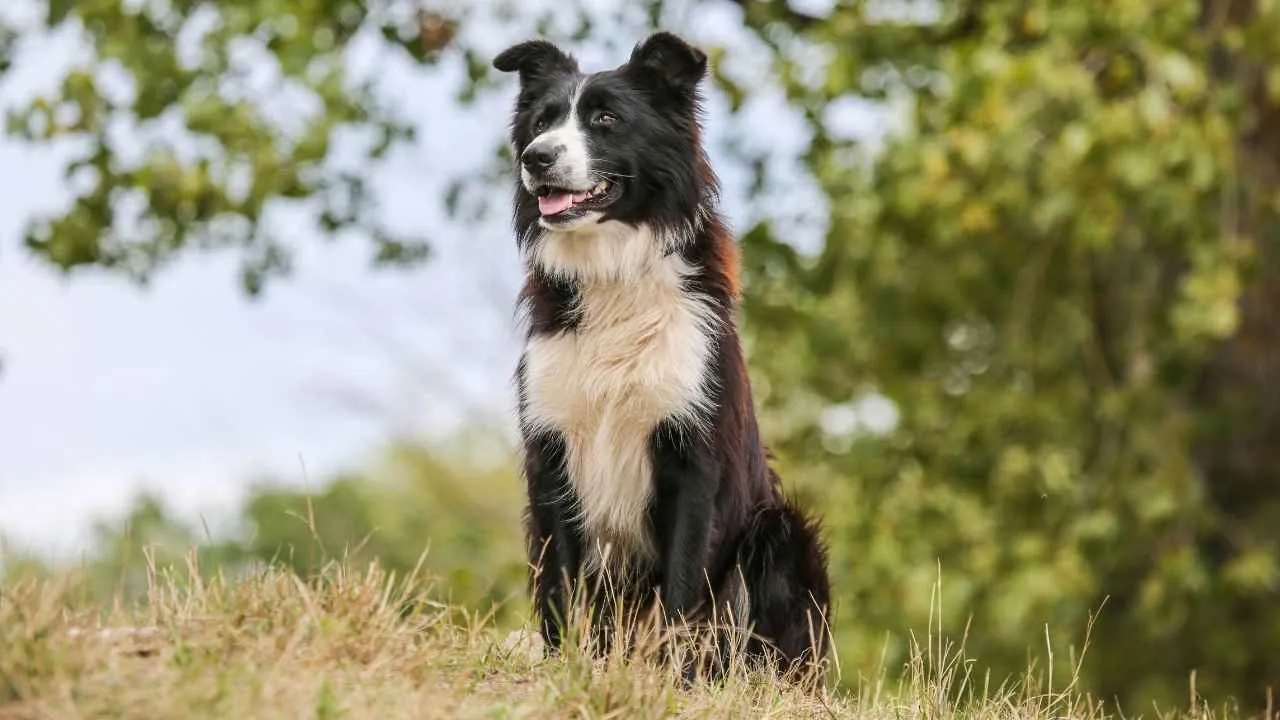
Herding style: Gathering
Best for herding: Sheep
If herding were an Olympic sport, the Border Collie would have more gold medals than Michael Phelps. Born in the borderlands between England and Scotland in the 1800s, this relatively “young” breed has bulldozed its way into the hearts of farmers and dog lovers worldwide.
These dogs are the Einsteins of the herding world — razor-sharp brains, lightning-fast reflexes, and the stamina of a marathon runner who’s had five cups of coffee.
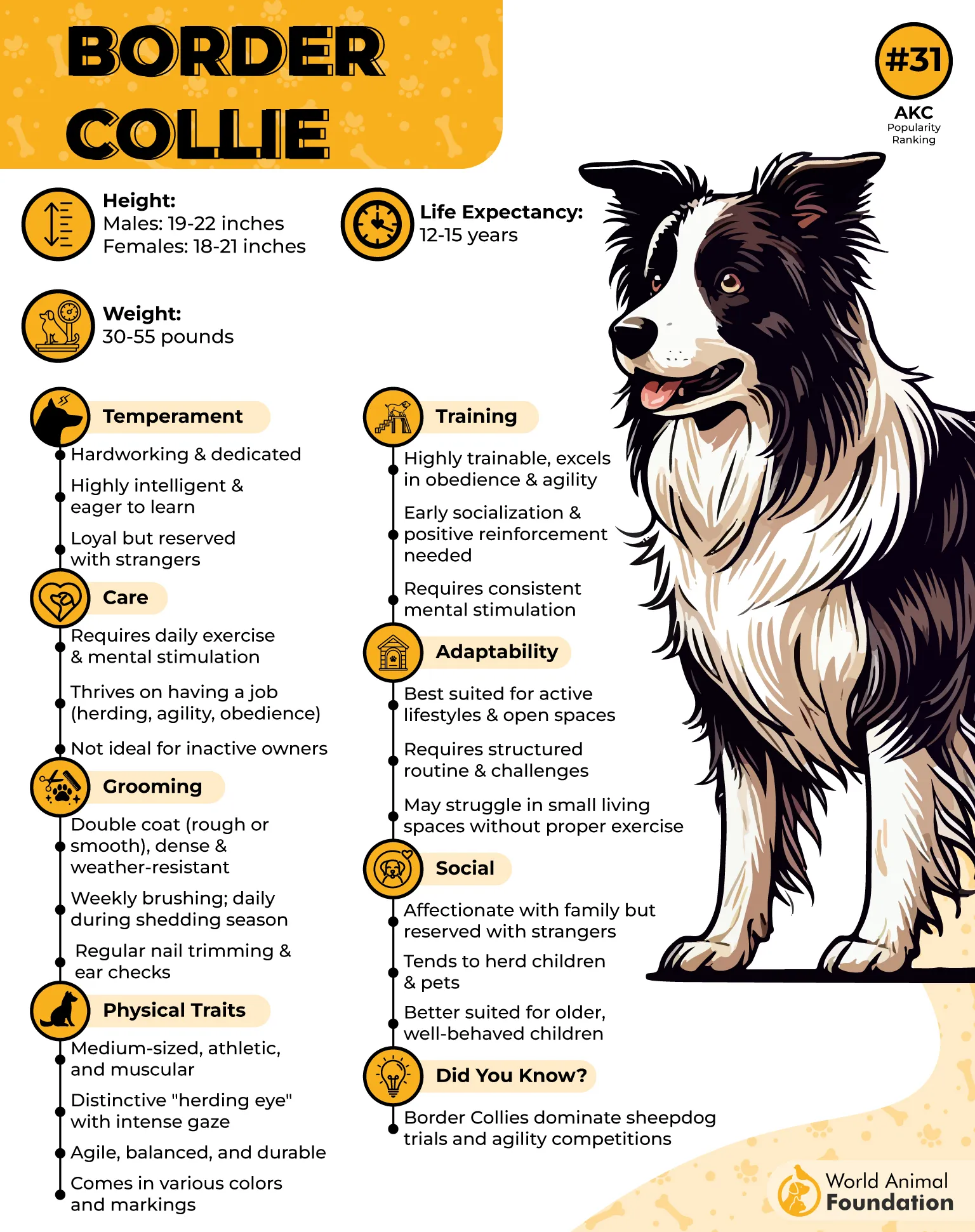
They’re natural gatherers, expertly circling sheep and bringing them together like a pro party planner rounding up last-minute guests. No commands needed — they just know what to do.
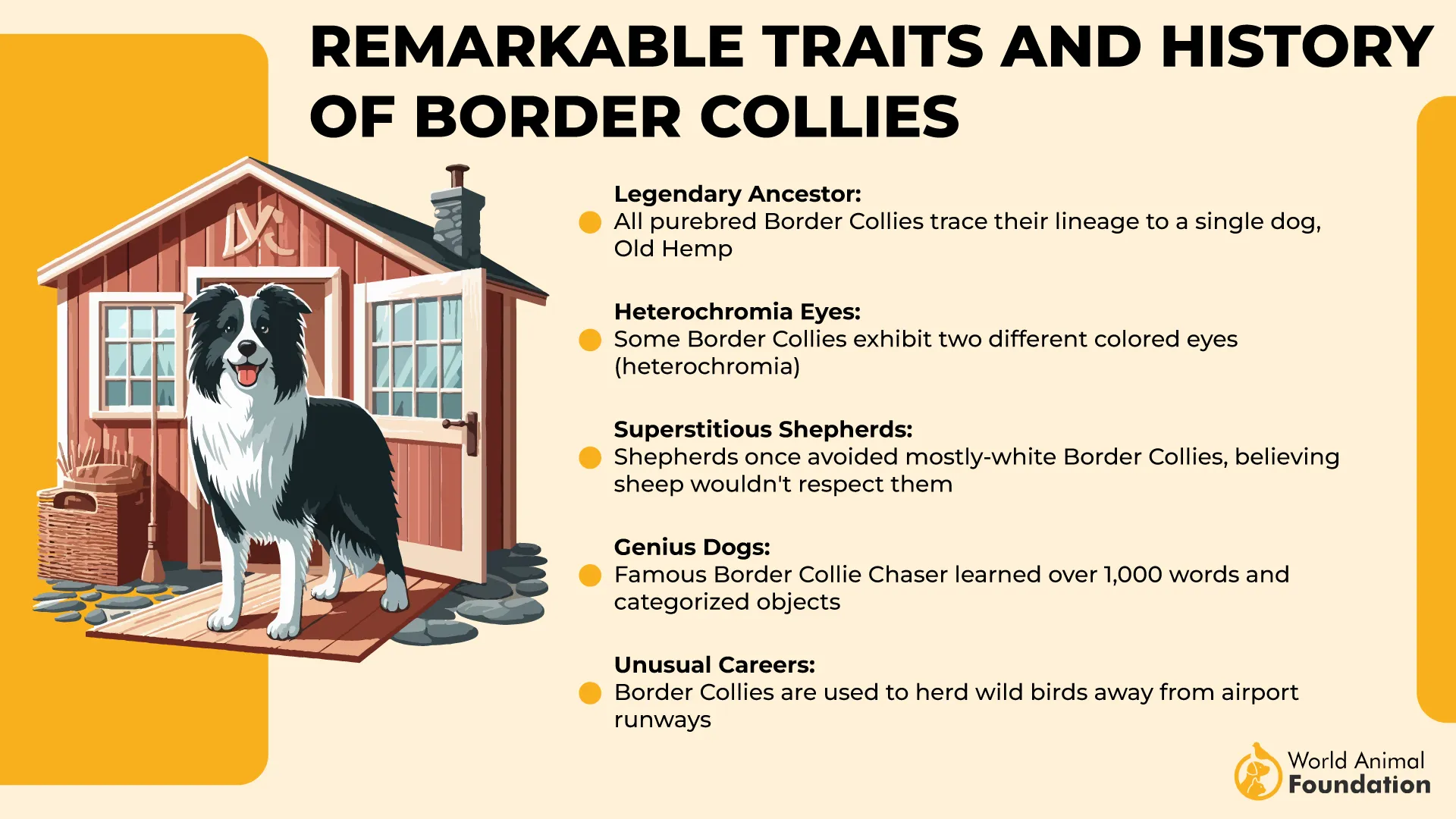
Border Collies are so smart and sensitive, some say they can read your mind. (Or at least what you want your sheep to do.) If you ever want a dog who can herd a flock and maybe help you solve that impossible crossword puzzle, this is your buddy.
Fun fact: Border Collies have a stare so intense, it’s been called “the eye.” It’s like they’re silently saying, “Sheep, follow me… or else.” Sheep take this very seriously.
4. Pembroke Welsh Corgi
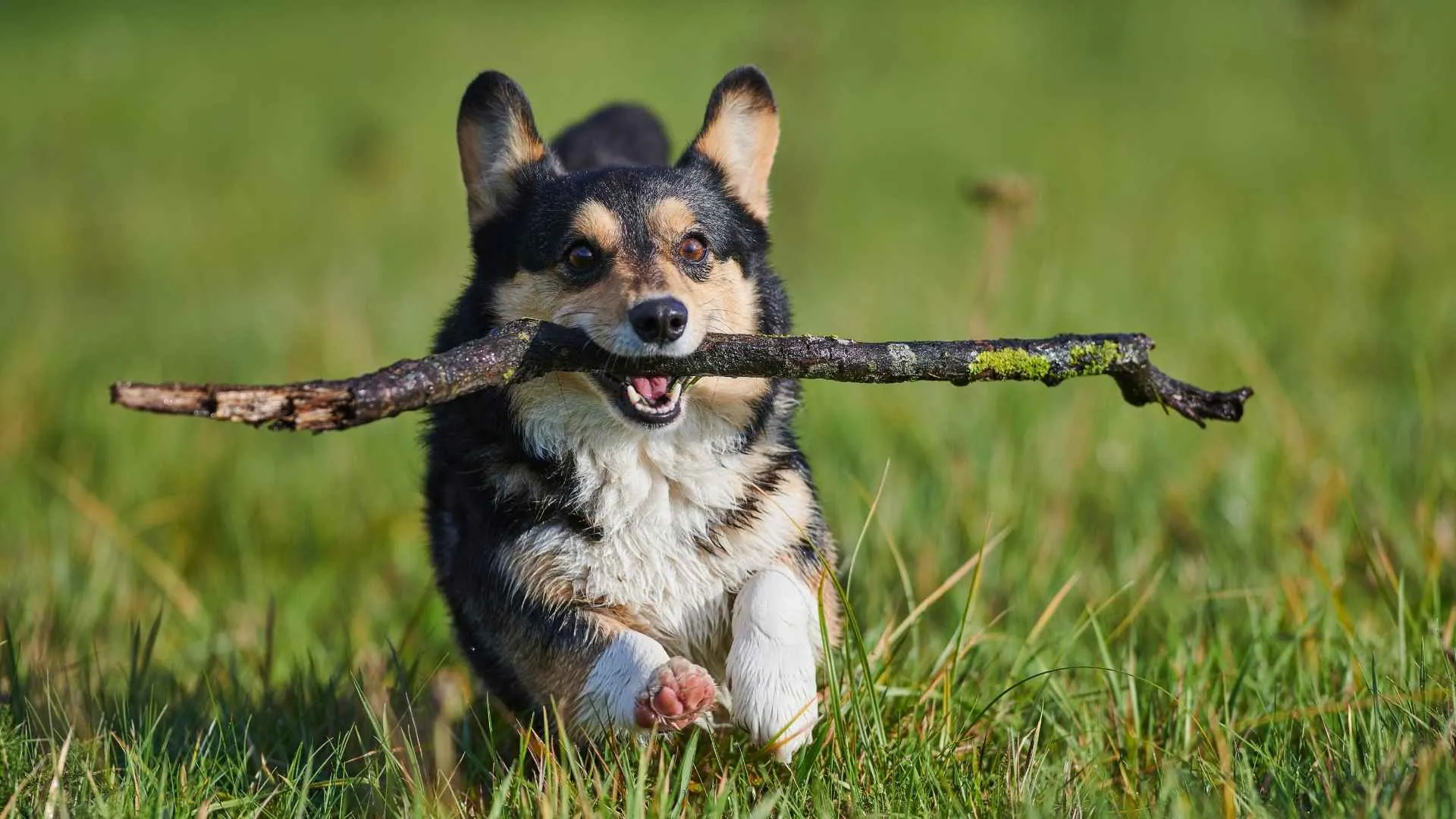
Herding style: Driving
Best for herding: Cattle, sheep, ducks
Don’t let their pint-sized stature fool you — Pembroke Welsh Corgis are tiny dynamos with a giant work ethic. Bred in Wales for herding everything from cattle to ducks, these short-legged legends are the little bulldozers of the farmyard.
Corgis herd by driving — that means they nudge, nip, and hustle livestock forward with a fierce determination, all without waiting for a single command. It’s like they have a built-in “Get moving!” button that never runs out of juice.
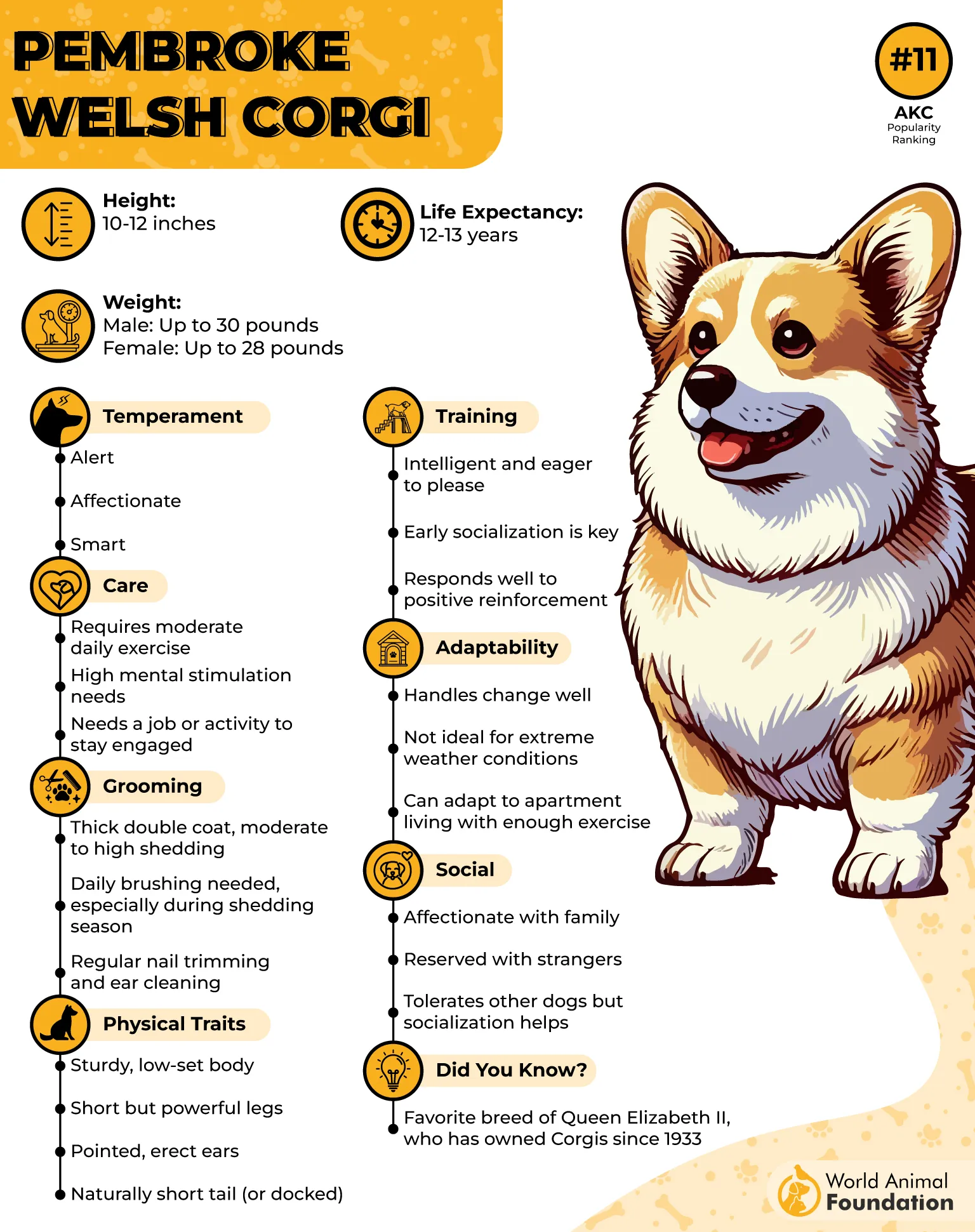
These dogs have the energy of a toddler who just drank a double espresso, but with the focus of a seasoned cowboy. Plus, they have an adorable “I’m small but I mean business” look that’s impossible to resist.
The Pembroke Welsh Corgi is an intelligent dog that loves being around people. They are loyal, lively, independent, and very adaptable, which allows them to thrive in a variety of living environments, from city apartments to spacious countryside homes.
Bonus: If you want a herding dog who will chase cows, herd ducks, and still be your Netflix binge buddy by night, Pembroke Welsh Corgi’s your champ.
5. German Shepherd
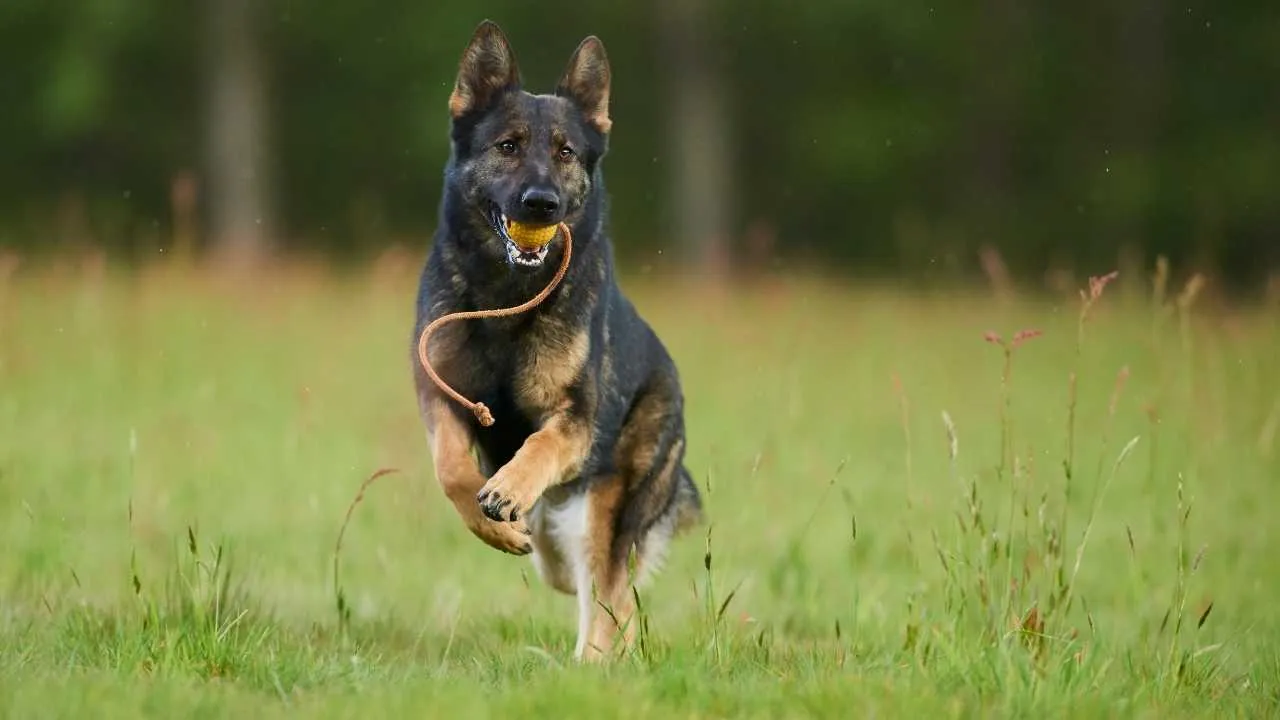
Herding style: Driving
Best for herding: Sheep
If there’s a canine superhero, the German Shepherd would be wearing the cape. The German Shepherd, also called the Alsatian in Britain, is a medium to large-sized working dog breed from Germany. It was originally developed for herding sheep, according to Wikipedia.
Known worldwide for police work, search-and-rescue, and being basically the dog version of a Swiss Army knife, these pups are also excellent cattle and sheep drivers on the farm.

They don’t wait around for commands; German Shepherds have an internal “Get it done” button that’s always on. When it comes to herding, they move livestock with confident, purposeful energy — almost like a furry general saying, “Move along now, people, no loafing!”

Super smart, loyal to a fault, and endlessly hardworking, German Shepherds herd with a no-nonsense approach. They’re also the dogs that can switch from rounding up sheep to cuddling on your couch faster than you can say “sit.”
Fun fact: Their versatility is legendary — you could give them a sheepdog vest or a police badge, and they’d rock both with equal flair.
6. Old English Sheepdog
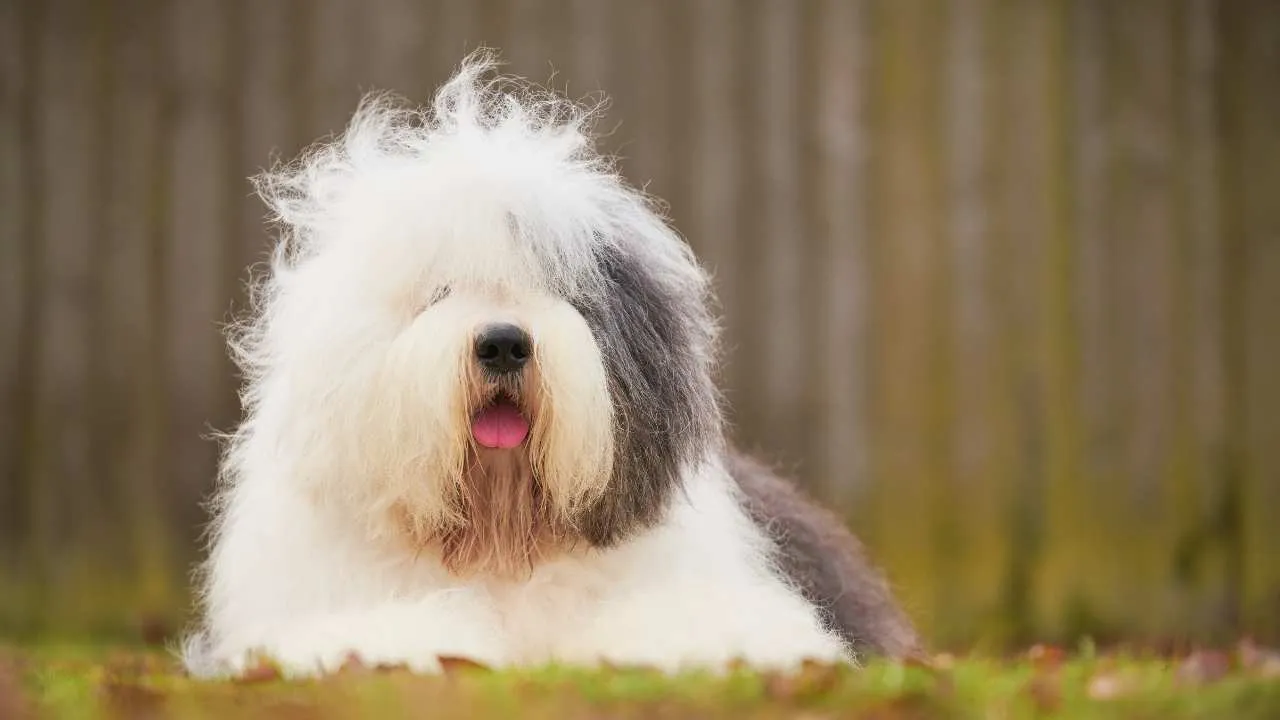
Herding style: Tending
Best for herding: Sheep, ducks
Fluffy, lovable, and with enough hair to double as a small shag carpet, the Old English Sheepdog might look like a gentle teddy bear — but don’t be fooled!
These big, shaggy herders have a special knack for tending livestock, which means they stay close, keep a watchful eye, and gently guide the flock rather than driving them full speed ahead.
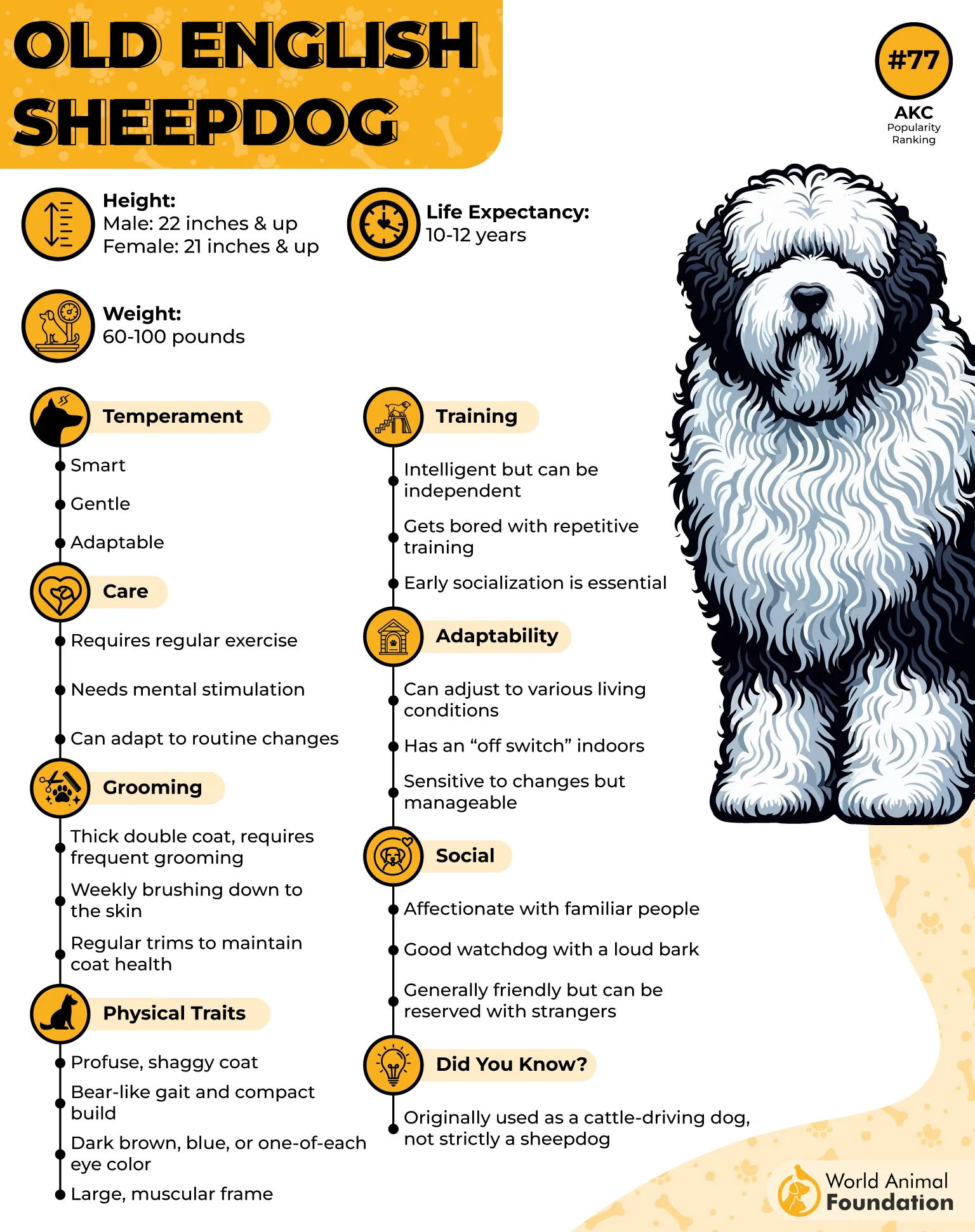
Originating from England’s rolling pastures, they work calmly and steadily, making sure no sheep or duck wanders off on an unexpected adventure. They’re the “calm but firm” type, like that wise friend who makes sure everyone gets home safe after the party.
Old English Sheepdogs have a moderate energy level and benefit from daily physical and mental stimulation. Their herding and livestock-guarding background can make them cautious around other animals, and they may take some time to feel comfortable with new people, as PetMD noted.
7. Shetland Sheepdog
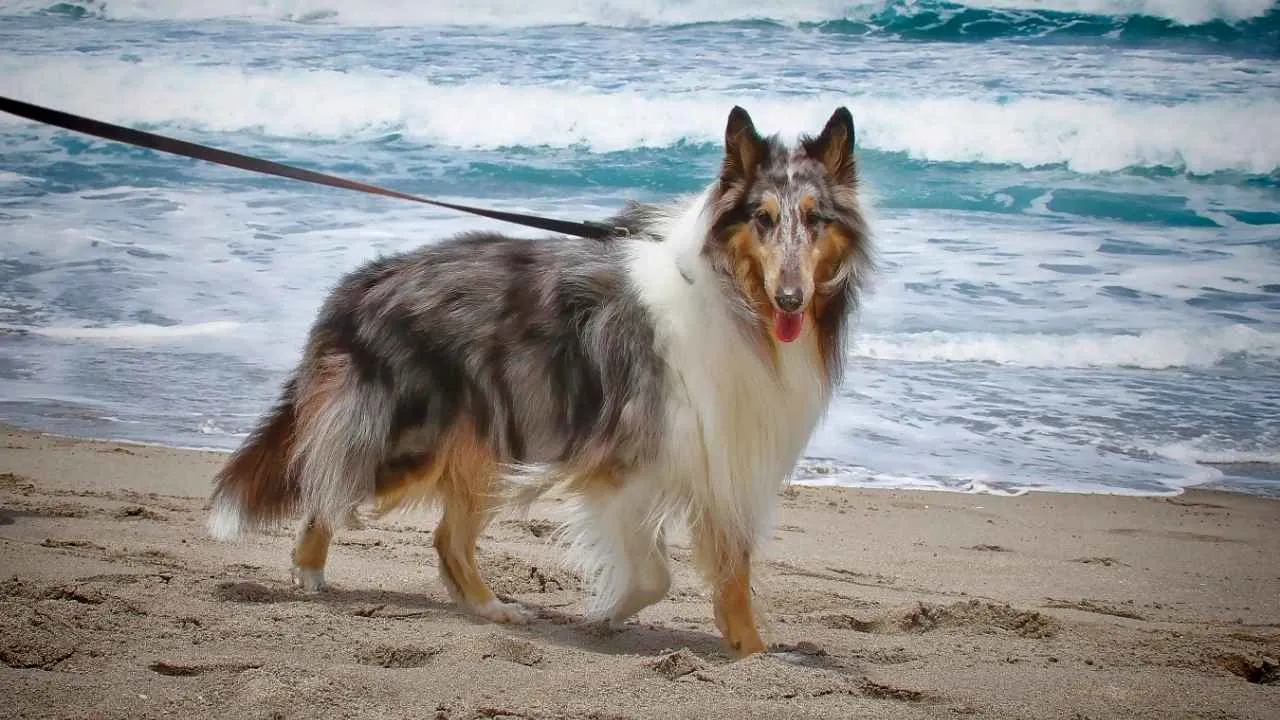
Herding style: Tending
Best for herding: Sheep, ducks
Meet the Shetland Sheepdog — the pint-sized powerhouse of the herding world. If Collies had a cute little sibling who’s somehow just as smart and twice as fluffy, it would be a Sheltie. These adorable dogs look like miniature versions of their bigger cousins, but don’t let their small size fool you!
Weighing in at around 20 pounds (that’s about the size of a small watermelon), Shelties are perfect for apartment dwellers or anyone who doesn’t have an entire farm to roam.
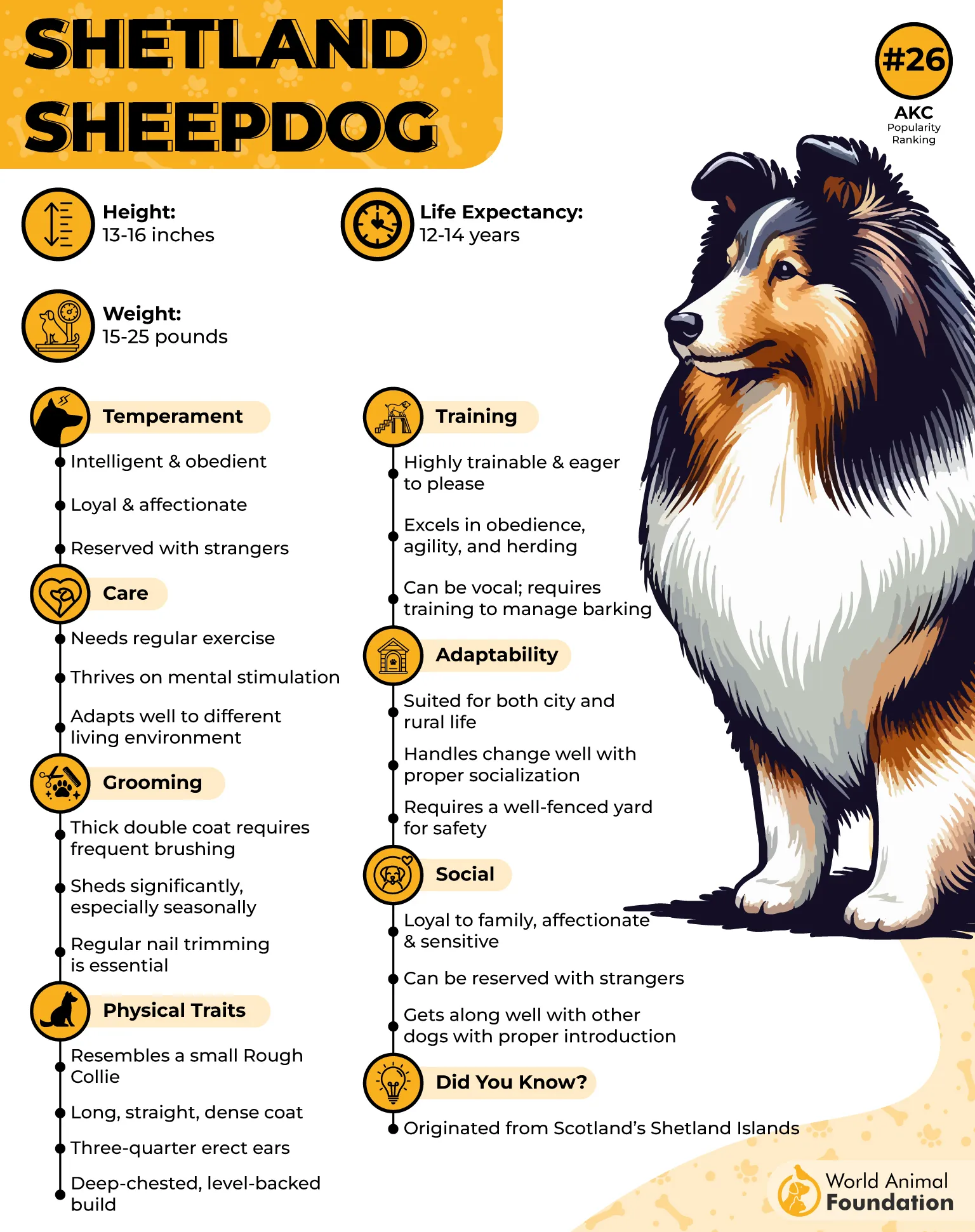
But don’t think for a second that small means slow — these pups are quick as lightning, alert as ever, and ready to tend their flock with all the care and smarts of a full-sized herder.
Unlike the “get moving!” style of driving herders, Shelties prefer to tend, which means they gently keep an eye on the flock, making sure nobody wanders off or gets into trouble. Think of them as the adorable farm babysitters who might also give you the side-eye if you slack on your chores.
They’re so alert, they’ll probably notify you of the mail carrier’s arrival, the neighbor’s cat sneaking around, or the slightest rustle in the bushes — all while keeping your sheep in line. Multi-taskers, much?
Thanks to their small size, Shelties make excellent pets for city folk and those with cozier living spaces, as long as they get plenty of walks or playtime in a secure yard. Otherwise, their herding instincts might redirect toward your furniture or house guests!
8. Australian Shepherd
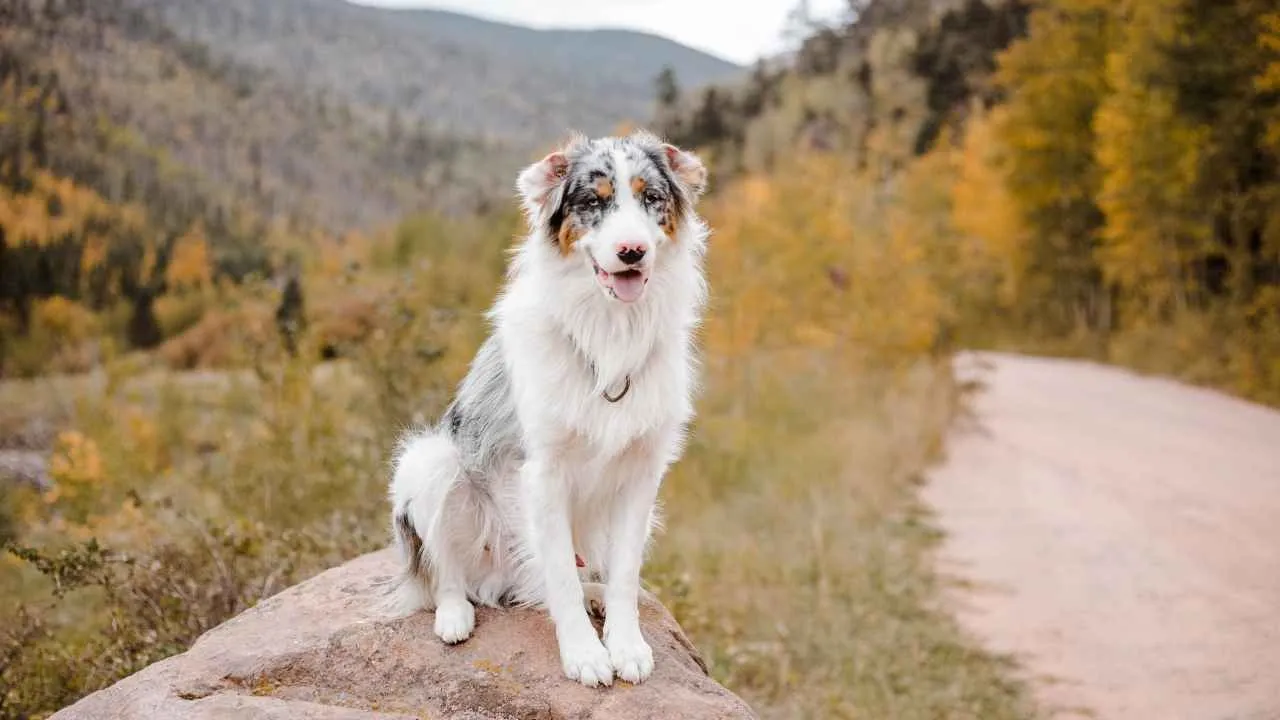
Herding style: Driving
Best for herding: Sheep, cattle
Don’t let the name fool you — the Australian Shepherd was actually developed in the U.S., but they’ve got all the grit, smarts, and energy you’d expect from a true Aussie legend.
These dogs are built for action, and their favorite pastime is driving livestock with laser focus and endless stamina.

If herding were a video game, Aussies would be speedrunners — covering ground fast, making sharp moves, and rarely needing any commands to know what to do. They work like a well-oiled machine, corralling sheep or cattle with a style that’s equal parts hustle and grace.
Given their high-energy lifestyle and temperament, owners should pay close attention to their joint and hip health to maintain mobility throughout their lives.
Plus, with those piercing eyes that seem to look right into your soul, Australian Shepherds make fantastic companions both on the farm and on the couch. Just don’t be surprised if they try to herd your kids or the mailman once in a while.
9. Australian Kelpie
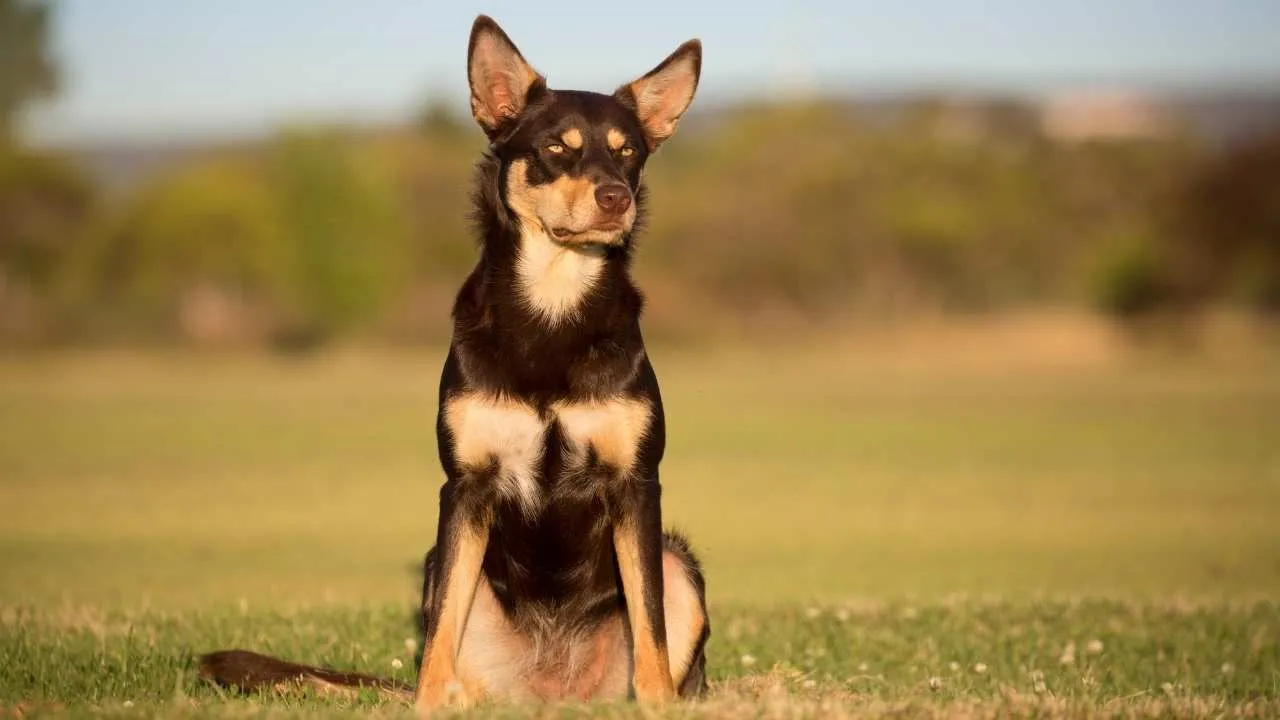
Herding style: Gathering, driving
Best for herding: Cattle, sheep
Another Aussie all-star, the Australian Kelpie is a versatile, energetic, and fiercely intelligent herding dog.
Known for both gathering and driving livestock, Kelpies are the all-terrain vehicles of the dog world — able to work tirelessly in harsh conditions, cover vast fields, and keep every animal exactly where it should be.
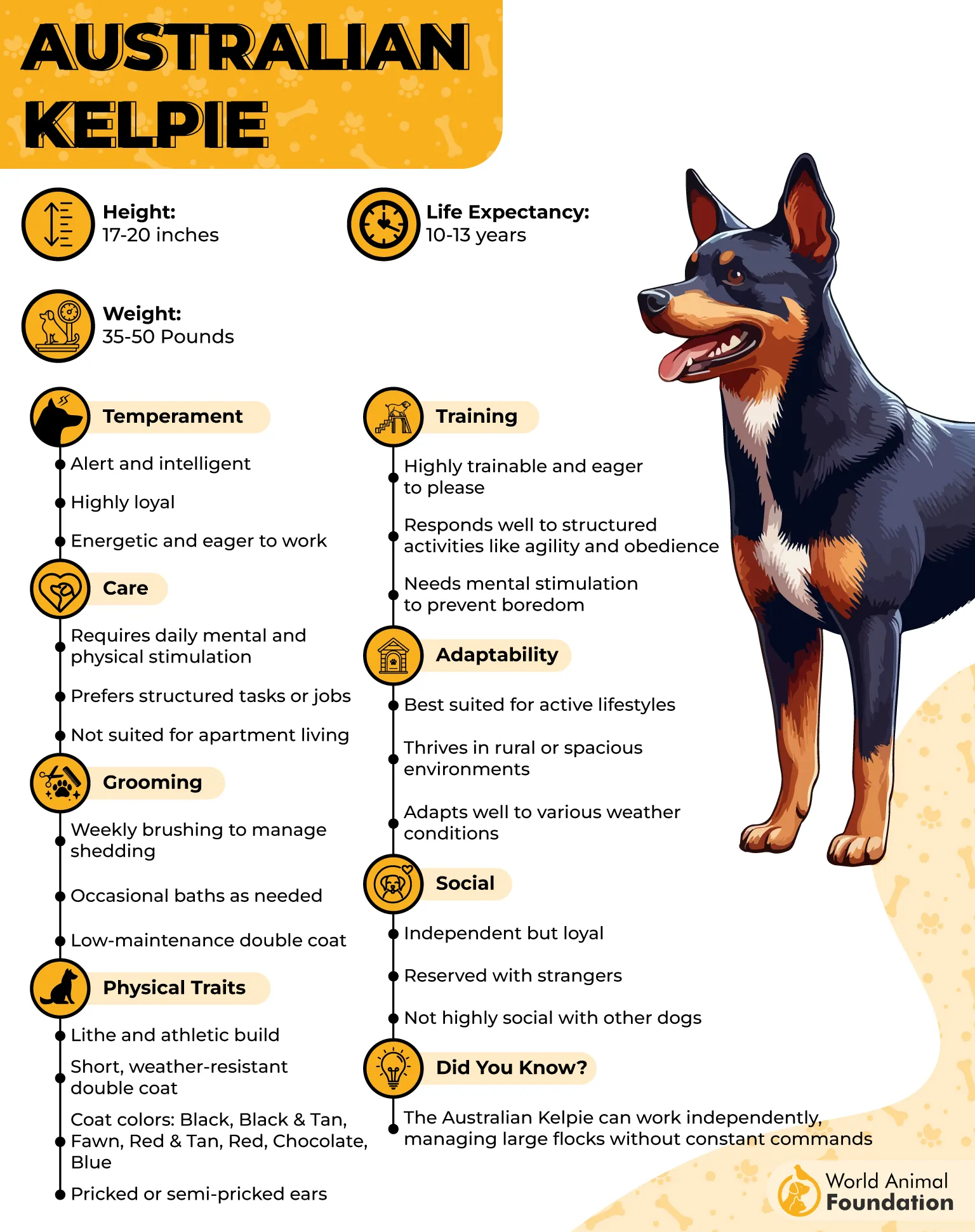
Kelpies have this natural “work first, ask questions later” vibe. Give them a flock to manage, and they’ll jump right in, circling and pushing animals with pinpoint precision — all without a single bark or command.
Kelpies are intelligent and highly trainable dogs, known for their even temperament and suitability as family pets, especially with children.
With their boundless energy and enthusiasm, they’re not just herders; they’re your farm’s four-legged managers. But fair warning: if they don’t get enough work or exercise, they might decide your furniture needs herding instead.
Conclusion
Most herding dog breeds like the Belgian Malinois and Cardigan Welsh Corgi were originally bred for sheep herding, guarding livestock, and driving dogs across long distances—often without a single command.
These strong-willed, sweet-tempered, and solid-muscle workers aren’t just good dogs; they’re remarkable partners in ranch life and beyond. Most herding breeds have gained popularity for their roles in dog sports, agility training, and as companions in homes with enough space and regular exercise.
Training, early socialization, and enrichment like food puzzles are key to avoiding destructive behaviors, especially in these high-energy breeds. Though some, like the Blue Merle or Belgian Sheepdogs, have shaggy coats suited for cold weather, all require care tailored to the individual dog.
Many dog breeds have shown instinctive talent in working with smaller animals, other pets, and even other dogs at the dog park. In the hands of the right humans, these natural herders are more than a good boy—they’re living legends of silent teamwork.


